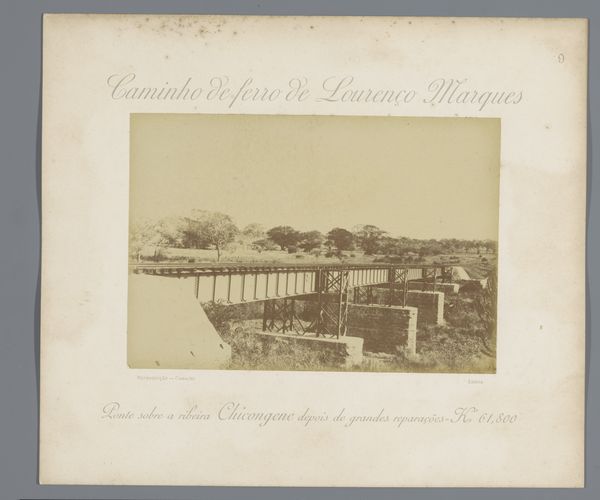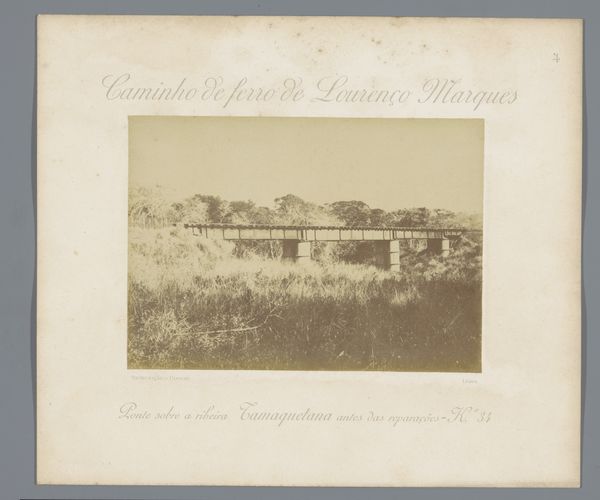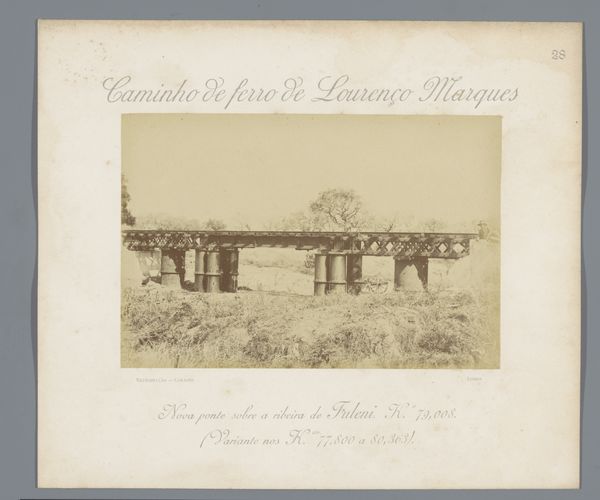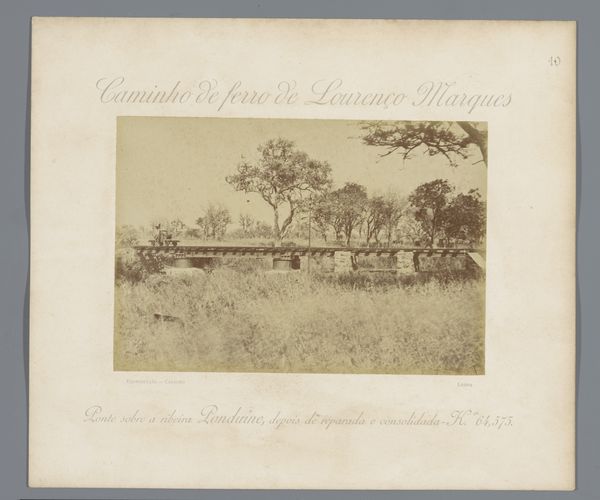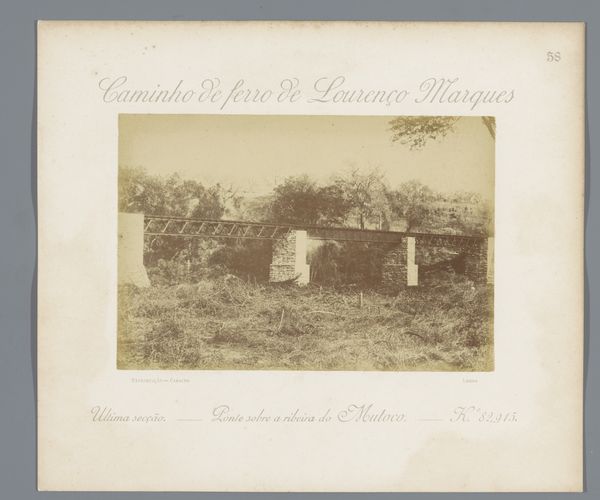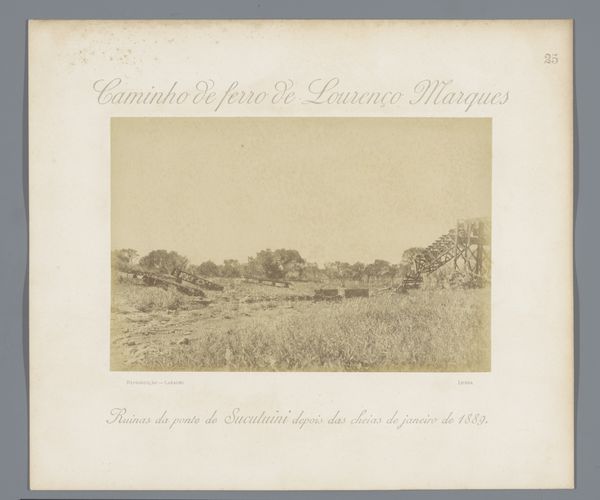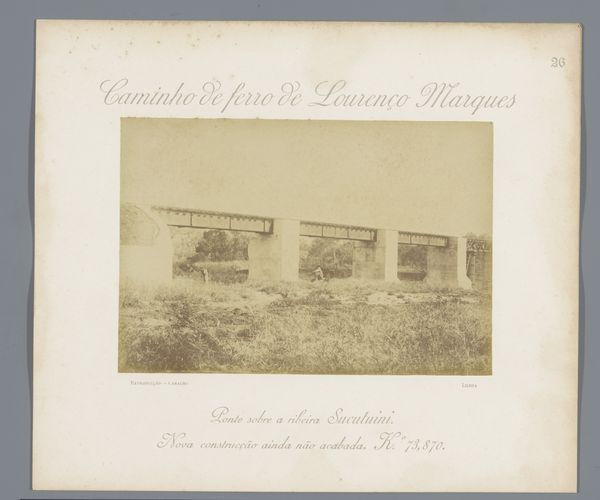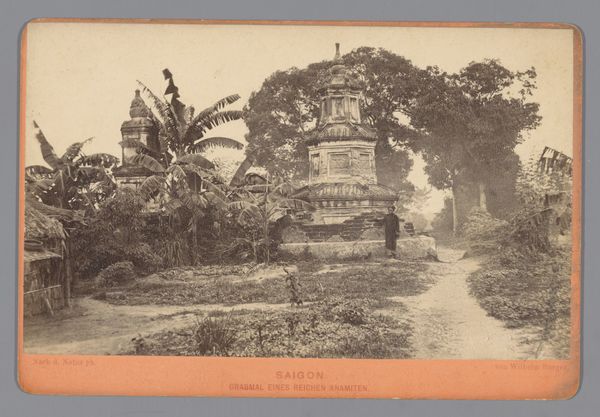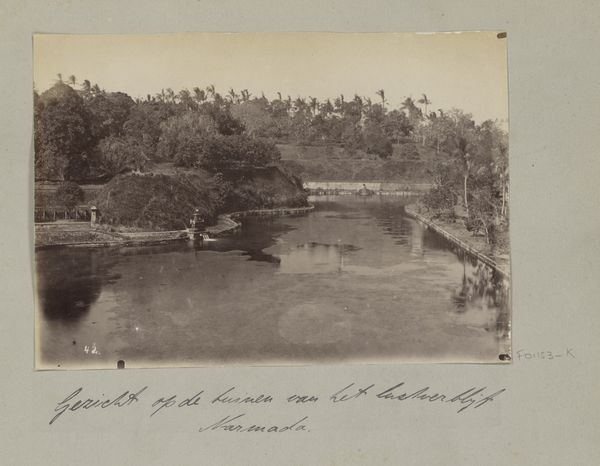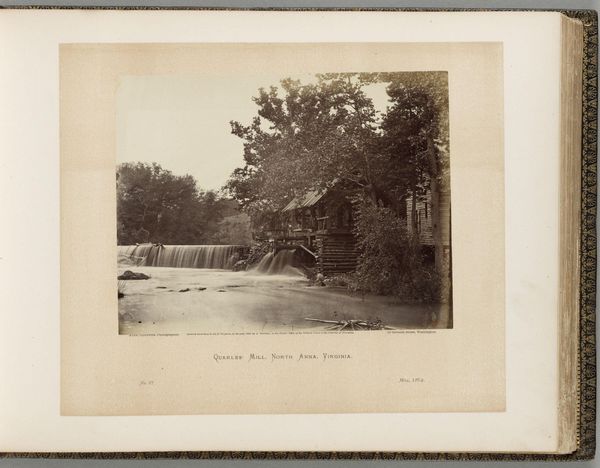
photography, albumen-print
#
landscape
#
photography
#
albumen-print
Dimensions: height 110 mm, width 161 mm
Copyright: Rijks Museum: Open Domain
Curator: Looking at this hauntingly beautiful photograph entitled "Spoorbrug in Mozambique," taken around 1886, one can't help but consider the history it encapsulates. Manuel Romão Pereira masterfully used the albumen print process to capture this landscape. Editor: You know, before you got all historical on me, the first thing that hit me was this really sepia, faded feel – like memory itself, slightly washed out, distant. It feels very still and kind of solemn. Curator: Precisely! This stillness, this seemingly 'washed out' aesthetic, provides insight into the period's colonial infrastructure. Railroads, like the bridge pictured here, represented progress and control for colonial powers. It speaks to the imposition of external systems on the Mozambican landscape and society. Editor: It is strange to think of progress as imposing something. I am not against trains. To be honest, it doesn't feel overtly aggressive at first glance. I find the picture visually quite delicate, balanced, the natural and artificial elements co-existing, even in a subdued sort of harmony. Look at the stark architecture but it slowly blends with the foliage behind. The artist managed to pull some artistic value from that. Curator: Harmony might be pushing it a bit. While Pereira composed the scene beautifully, we can't overlook that the construction of the railway often involved forced labor and resource extraction. This photography could have functioned as a piece of propaganda. What are the public displays behind that? Editor: Sure, let’s contextualize what we are seeing, it makes the image even more fascinating, and a bit tragic. What looks like faded harmony may have come at a significant cost. Maybe what attracts me so much is the visual layering and how the bridge is kind of sinking into the earth! I wonder, will it ever return to dust and merge again? Curator: That is a quite poetic insight. It highlights how the passage of time impacts our understanding and it emphasizes photography's role in preserving and manipulating our memories. Editor: Exactly. Ultimately, I see a ghost story layered with complicated progress, colonial expansion, technical evolution and a bridge suspended in sepia eternity. Curator: Indeed. A tangible record, charged with political weight, continuing to spark discussion even now.
Comments
No comments
Be the first to comment and join the conversation on the ultimate creative platform.

